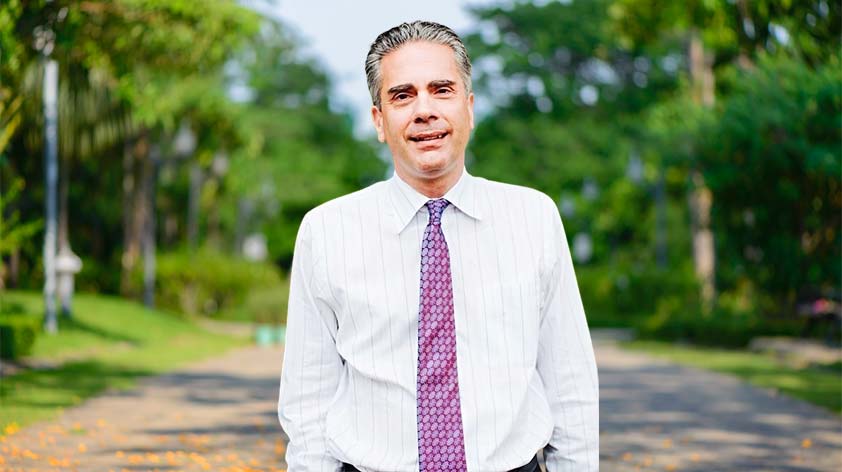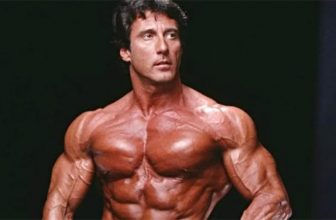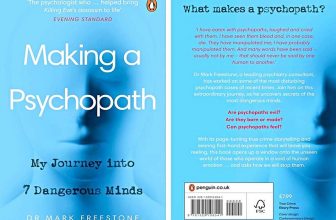
Title: Trauma: The Invisible Epidemic: How Trauma Works and How We Can Heal From It
Author: Paul Conti, MD / Foreword by Lady Gaga
Year: 2022
Publisher: Vermilion
Society should conceptualize trauma as an out-of-control epidemic with a potentially fatal prognosis. -Paul Conti, MD.
What do you know about trauma? Do you know how it can affect you and how it can affect the people around you? Do you know if you are still carrying any past trauma? Paul Conti, the psychiatrist, consultant and author will open your eyes with these questions and more on the subject of trauma.
In this article, I will share with you 5 lessons from Dr. Paul Conti’s work which will help you live your life to the fullest whilst letting past trauma and old toxic behavior go.
Trauma Changes the Brain
When trauma happens in our lives, it creates changes in our brain and in how we respond and act in our social context. In other words, it’s a change in our life’s narrative.
Through the years we learn to move forward, no matter what, but we are always linked to our past, and this can be dangerous; we learn how to react to specific stimulus, so if we had bad experiences with something specific, we’ll tend to carry those reactions during our entire life; and what’s even worse is that we’ll often never notice it!
This toxic cycle will create “maladaptive behaviour” which, historically, can make sense, but today we’re facing an epidemic that’s worse than we think.
Break the Social Norm
In some societies talking about depression, death, and such related topics is “banned”, just think about the topics that you’ll never talk about during dinner with your family, and my question is why? Conti talks about how our brain was made to remember traumatic experiences so we do not repeat them; let me give you an example:
Imagine that you need to hunt and collect food to survive, if you find berries and your friend ate the red one and died, you will never forget that moment, not just because your friend is dead but because you have to remember which berries are the poisonous ones!
The same happens if one of your friends or family died while hunting, you cannot stop being sad, if you stop the whole tribe will starve to death. We are still carrying this behavior but, in our society, and our era, this must change. We must start talking about this epidemic, we must inform others and offer help, and by doing this we will break this senseless stigma around mental health.
The Domino Effect
This lesson can be quite hard to understand, and it refers to the following question: “Why do we become our own perpetrators?”
Paul gives us two possible answers: 1. Repetition as a way to solve the conflict and 2. Identification it is safer to feel like the abuser.
Imagine a person who was raised by an abusive father, in that person’s psyche we can find two different personalities fighting against each other; an internal victim and an internal perpetrator. That person can repeat the same pattern and abuse other people or can look for partners that will abuse him/her.
This cycle is quite complex and the person is not aware of it, and the problem gets even worse because; how can you solve a problem that you do not know exists? This question will be discussed in the last two points.
Damned if You Do, Damned if You Don’t
You do not do something because it is bad, but then you feel bad so you do it anyway. When Conti talks about this, he refers to addiction and how people can fall into the same patterns even after years of being sober. This goes like the following: If the central conflict is not solved, any trigger can cause it to repeat.
When a person gets addicted to a substance (drugs, alcohol, even coffee and sugar) it creates patterns in his/her brain; these patterns get activated every time the person consumes these substances and then they will demand more.
The problem is that you might be able to stop and these patterns will “stop” but then one day, a random situation happens and those same patterns will kick in again. And remember, someone with a core conflict cannot solve things alone. This takes us to the last lesson…
Do Not be Afraid of What’s Inside of You
Conti talks about shame and guilt as the main drivers of our actions, but when talking about traumas, are you not allowed to make mistakes? If you do not know about your inner traumas, how are you supposed to act properly? He mentions that we must not be afraid of darkness and that the only way to heal is to reflect and embrace ourselves. He talks about creating a healthy culture and mentions the following:
“Culture is the sociological equivalent of free will; if you understand yourselves, you see that you exercise free will but also, can exercise a culture; a culture of helping and supporting people.”
So, take the first step; ask for professional help, and talk to your friends and your family, otherwise, you will fall into, what I like to call, the “insomnia mistake”; you take pills because you cannot sleep thinking it will help, but the problem is in your heart, in your brain and your past.
Summary
Paul’s work is amazing, of the same caliber as Gabor Maté‘s, another amazing professional. He talks about our ‘sick’ society and medical system, something that must be taken seriously. He talks about our inner demons and gives us tools which will help us see the light even in a dark room. Interestingly enough, Kim Kardashian said this about the book: Dr. Conti also provides real solutions – solutions people can use for themselves and their loved ones, and solutions to help make the world a kinder and safer place. I think his work is solid, and this book a must read, so if you haven’t read it yet, I strongly encourage you to take a look!
Have you dealt with trauma? What do you believe is the best way to freedom from it? Please share your thoughts on it in the comments below, and join in the conversation on Facebook, Twitter, & Instagram.









